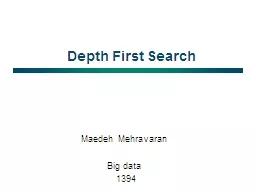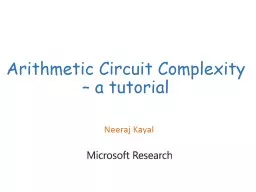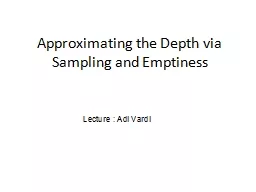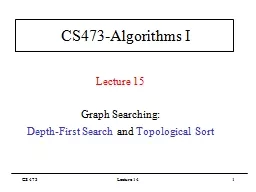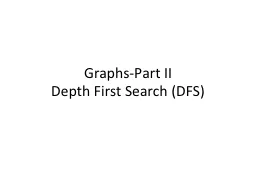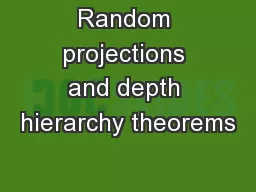PPT-Depth First Search
Author : yoshiko-marsland | Published Date : 2016-03-17
Maedeh Mehravaran Big data 1394 Depth First Search DFS Starts at the source vertex When there is no edge to unvisited node from the current node backtrack to most
Presentation Embed Code
Download Presentation
Download Presentation The PPT/PDF document "Depth First Search" is the property of its rightful owner. Permission is granted to download and print the materials on this website for personal, non-commercial use only, and to display it on your personal computer provided you do not modify the materials and that you retain all copyright notices contained in the materials. By downloading content from our website, you accept the terms of this agreement.
Depth First Search: Transcript
Download Rules Of Document
"Depth First Search"The content belongs to its owner. You may download and print it for personal use, without modification, and keep all copyright notices. By downloading, you agree to these terms.
Related Documents

